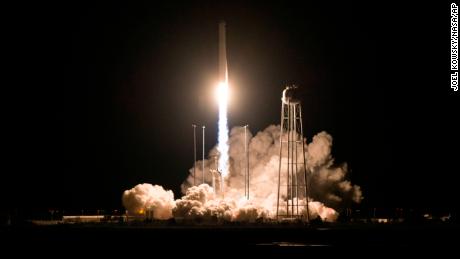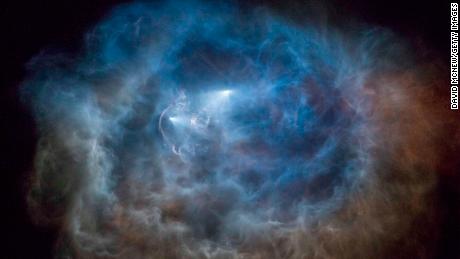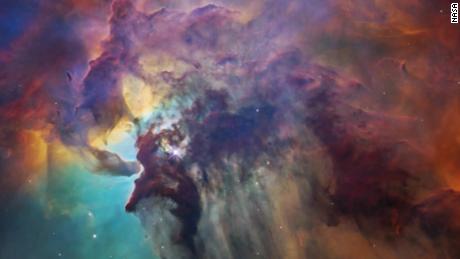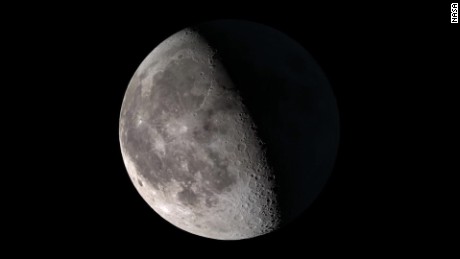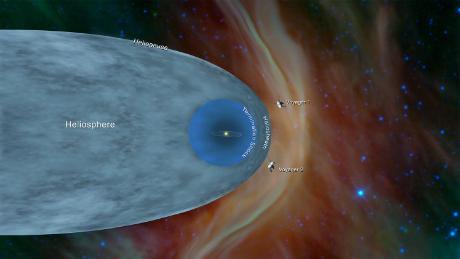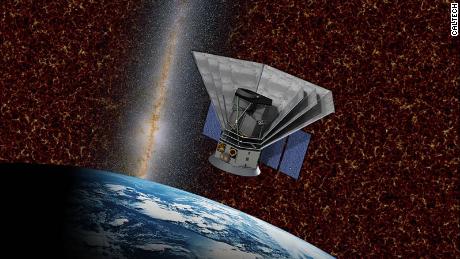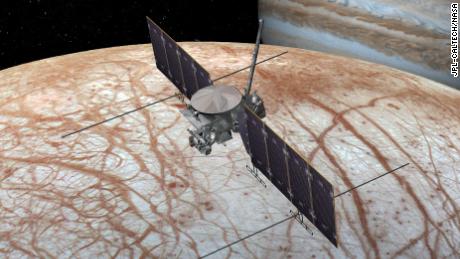Story highlights
- NASA's Solar Probe Plus mission will set off to explore the sun's atmosphere in summer 2018
- It's NASA's first mission to the sun and its outermost atmosphere
(CNN)Wearing a nearly 5-inch coat of carbon-composite solar shields, NASA's Parker Solar Probe will explore the sun's atmosphere in a mission that begins in the summer of 2018.
It's not a journey that any human can make, so NASA is sending a roughly 10-foot-high probe on the historic mission that will put it closer to the sun than any spacecraft has ever reached before.
The probe will have to withstand heat and radiation never before experienced by any spacecraft, but the specially designed mission will also address questions that couldn't be answered before. Understanding the sun in greater detail can also shed light on Earth and its place in the solar system, researchers said.
This is NASA's first mission to the sun and its outermost atmosphere, called the corona.
On Wednesday, the craft -- initially called the Solar Probe Plus -- was renamed the Parker Solar Probe in honor of astrophysicist Eugene Parker.
"This is the first time NASA has named a spacecraft for a living individual," said Thomas Zurbuchen, associate administrator for the agency's Science Mission Directorate in Washington. "It's a testament to the importance of his body of work, founding a new field of science that also inspired my own research and many important science questions NASA continues to study and further understand every day. I'm very excited to be personally involved honoring a great man and his unprecedented legacy."
Parker published research predicting the existence of solar wind in 1958, when he was a young professor at the University of Chicago's Enrico Fermi institute. At the time, astronomers believed that the space between planets was a vacuum. Parker's first paper was rejected, but it was saved by a colleague, Subrahmanyan Chandrasekhar, an astrophysicist who would be awarded the 1983 Nobel Prize for Physics.
Less than two years after Parker's paper was published, his theory of solar wind was confirmed by satellite observations. His work revolutionized our understanding of the sun and interplanetary space.
Parker is now the S. Chandrasekhar Distinguished Service Professor Emeritus at the University of Chicago. Zurbuchen and Nicola Fox, the mission project scientist for Parker Solar Probe, also presented Parker with the first scale model of the probe and NASA's distinguished public service medal.
"I'm greatly honored to be associated with such a heroic scientific space mission," Parker said.
The Parker Solar Probe will carry a chip with photos of Parker and his revolutionary paper, as well as a plate carrying whatever inscription Parker wishes to provide -- his message to the sun.
The probe will eventually orbit within 3.7 million miles of the sun's surface. The observations and data could provide insight about the physics of stars, change what we know about the mysterious corona, increase understanding of solar wind and help improve forecasting of major space weather events. Those events can impact satellites and astronauts as well as the Earth -- including the power grid and radiation exposure on airline flights, NASA said.
The mission's objectives include "tracing the flow of energy that heats and accelerates the sun's corona and solar wind, determining the structure and dynamics of the plasma and magnetic fields at the sources of the solar wind and explore mechanisms that accelerate and transport energetic particles."
"We've been inside the orbit of Mercury and done amazing things, but until you go and touch the sun, you can't answer these questions," Fox said. "Why has it taken us 60 years? The materials didn't exist to allow us to do it. We had to make a heat shield, and we love it. Something that can withstand the extreme hot and cold temperature shifts of its 24 orbits is revolutionary."
Solar wind is the flow of charged gases from the sun that is present in most of the solar system. That wind screams past Earth at a million miles per hour, and disturbances of the solar wind cause disruptive space weather that impacts our planet.
Space weather may not sound like something that concerns Earth, but surveys by the National Academy of Sciences have estimated that a solar event without warning could cause $2 trillion in damage in the United States and leave parts of the country without power for a year.
In order to reach an orbit around the sun, the Parker Solar Probe will take seven flybys of Venus that will essentially give the probe a gravity assist, shrinking its orbit around the sun over the course of nearly seven years.
The probe will eventually be closer to the sun than Mercury. It will be close enough to watch solar wind whip up from subsonic to supersonic.
When closest to the sun, the probe's 4┬Į-inch-thick carbon-composite solar shields will have to withstand temperatures close to 2,500 degrees Fahrenheit. Due to its design, the inside of the spacecraft and its instruments will remain at a comfortable room temperature.
The probe will reach a speed of 450,000 mph around the sun. On Earth, this speed would enable someone to get from Philadelphia to Washington in one second, the agency said. The mission will also pass through the origin of the solar particles with the highest energy.
The mission is scheduled to end in June 2025.
"The solar probe is going to a region of space that has never been explored before," Parker said. "It's very exciting that we'll finally get a look. One would like to have some more detailed measurements of what's going on in the solar wind. I'm sure that there will be some surprises. There always are."






